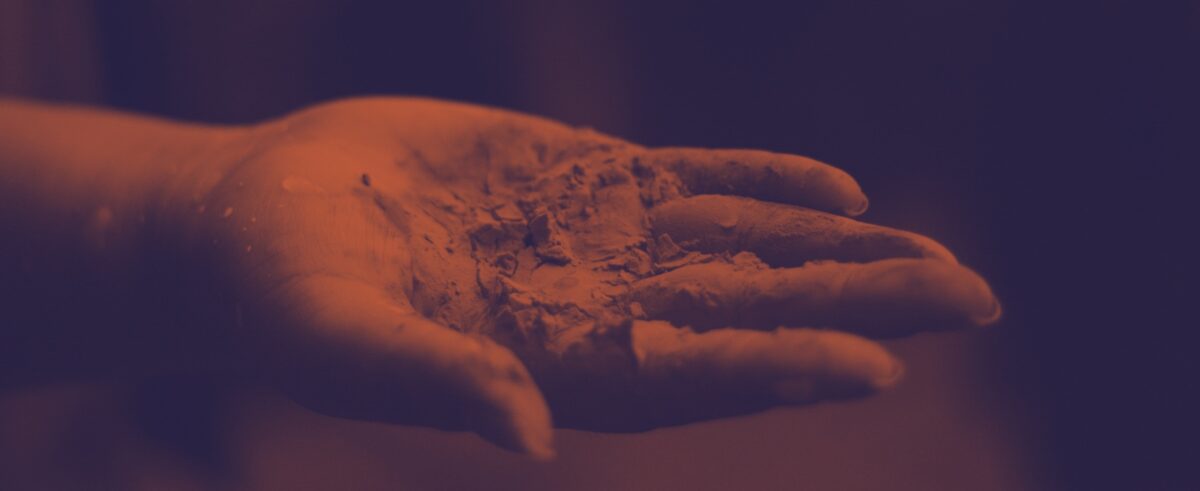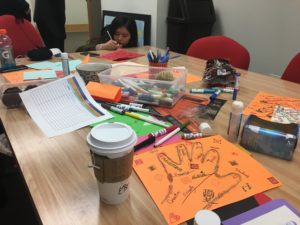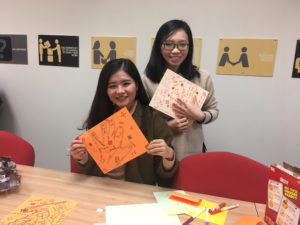As week five of the Winter quarter rolls around, most of us have a lot on our minds. With midterms approaching and perhaps a sense of January fatigue setting in, it’s refreshing to make some time to engage in creative expression. This Monday at the CMWR, Evan R. and I facilitated Craft Day, an opportunity to work with art materials to de-stress, connect with others, and open up a space for creative energy to flow.
With an array of colorful markers, an assortment of glitter, and some yarn, the group set out to create “Identity Hands.” To make an identity hand, we simply traced our hands on a piece of paper and then decorated them with love and pizazz. On the outside of the hands, we wrote words that indicate how others perceive our identity. Inside the hand, we wrote words that reflect how we perceive our own identity.
We were all eager to dive into the bin full of markers and other craft supplies, quickly drawing and embellishing our five-fingered masterpieces. But, when we all stopped to fill both sides of the hands with words—to think about our identities—there was a silent pause. A few “hmm” and “huh” sounds echoed across the room. Someone leaned over, asking, “how do you perceive me?”As we all sat contemplating, another person observed, “this is actually kind of hard!”
And it was kind of hard. We inhabit our identities every day, but articulating and writing them down is another story. Together, we worked through the various meanings and levels of identity, from the external to the internal, from the simple to the complex. Through our crafting, we found that our identities are a complex myriad of our experiences. It took each of us some time to reflect upon our own histories, relationships, and perspectives.
Another interesting roadblock that arose was in our decisions about what words went outside and inside the hand—that is, what words should describe how others see us, and how we see ourselves. For some, differentiating between the external and internal aspects of identity blurred together. For others, perhaps choosing one side’s words was more challenging than the other side. In any case, this moment brought us together in contemplation, as we gave thought to our own selves and our relationship to others. This drew our attention to the complexity of navigating being both an individual, and a member of larger groups.
At the CMWR, part of our values and our approach to working with writers calls upon cross-cultural communication. This mode of communication involves “sharing of culture and experiences and knowledge” to “[allow] us to better connect, understand, and empathize with one another.” Coming from a range of diverse cultural, social, and personal experiences, we realized how our different perspectives and identities foster unique ways of being and interacting in the world.
Although we are constituted in and by our identities, we may not always consciously think about them. But, by taking time to reflect upon our own identities, and through speaking (or crafting) our truths, we learned a lot together. We fostered a sense of self-awareness, an appreciation of diversity, and a mindfulness of the experiences of others, all while having fun.
Discover more from UCWbLing
Subscribe to get the latest posts sent to your email.



